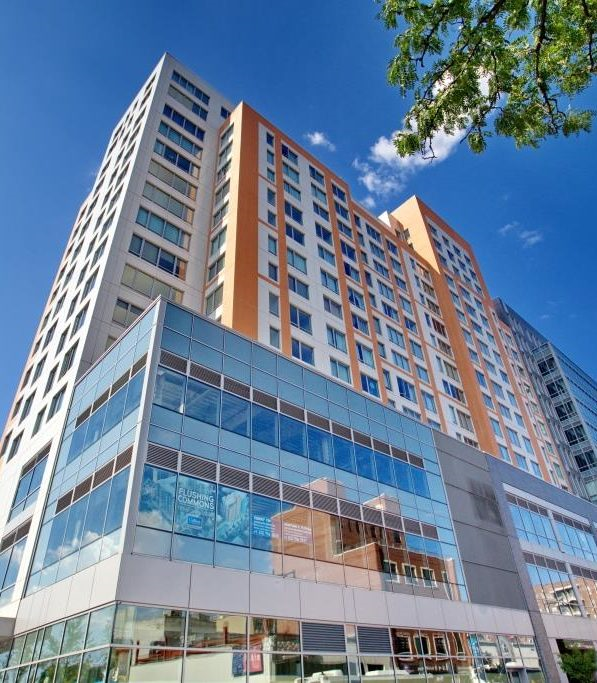
Flushing Commons at 138-35 39th Ave.
Aug. 27, 2019 By Allie Griffin
For many Flushing residents, it feels like the neighborhood only makes headlines when the U.S. Open roles into town.
Yet locals know there’s much more than great food and tennis in Flushing — and apparently real estate developers do too.
Urban planners and data scientists at home search platform Localize.city looked at Flushing’s real estate trends — with a focus on new development, demographic shifts and neighborhood challenges.
“Flushing is one of the fastest-changing neighborhoods in New York,” said Localize.city urban planner Olivia Jovine. “Flushing feels like a vibrant and bustling downtown with all of the new retail that has opened in recent years and all the new construction in the pipeline.”
Flushing’s real estate sector is undergoing enormous growth with new construction taking place throughout the area. The neighborhood ranked seventh citywide in a Localize.city analysis of where the most new apartments are expected to open through 2020.
Roughly 2,500 new apartments are expected to be built over the next few years, according to the site. With those apartments, comes taller more modern buildings, rising 15 to 20 stories, far above the current smaller brick apartment buildings that line Flushing’s streets.
Construction of Flushing Commons, a five tower 600-unit development, is already underway and plans were filed earlier this month for a 37-story, two-tower development on a vacant lot on Park Avenue. Another mega-development, Flushing Point Plaza, a 326-unit complex with a hotel, is expected to open by next year and a new 448-unit luxury condo development named Sky View Parc offers its residents waterfront access.
A nine-story health care center is also expected to open in the community in the near future. It will provide affordable healthcare services to Queens residents, regardless of immigration status or ability to pay. More than 58 percent of the neighborhood’s population consists of immigrants, compared to about 36 percent for the entire city, according to Localize.city’s data.
However with the new apartment building and influx of people, some Flushing residents are worried about potential overcrowding of the area’s public schools, strains to its transit system and the loss of mom-and-pop shops — often immigrant-owned small businesses. Schools in District 25’s Flushing, Murray Hill and Willets Point area are expected to need 1,756 additional seats for the 2019-2020 school year, according to Localize.city.
“All of that new development is bringing new investment to the area, with park renovations, subway upgrades and more,” Jovine said. “But the neighborhood still has some challenges especially with overcrowding, whether its schools are overcapacity or its traffic too hectic.”
One Comment







When planning commissions come together to envision new resident zones the first thing that should be taken into consideration is a new school district as well. No matter how many add-ons you attach to a current school building you still have overcrowded districts which lead to poorly educated students, underpaid teachers and lastly crumbling building. Bottomline patching the school buildings are not the solutions to the future of education new construction is…